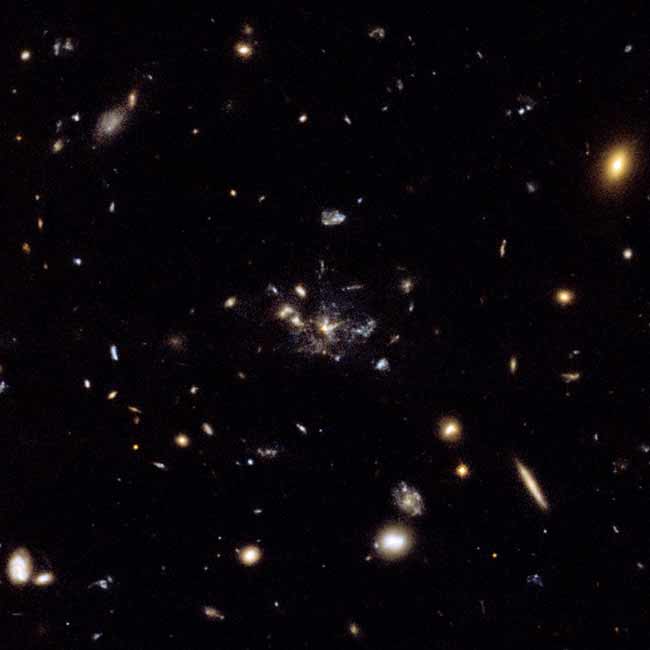Large Galaxy Caught in the Making

Astronomers have long suspected that most large galaxies form at least in part by acquiring smaller galaxies in dramatic cosmic mergers.
New images from the Hubble Space Telescope support that view.
Hubble photographed the Spiderweb Galaxy [image], officially MRC 1138-262. It is 10.6 billion light-years away. The light we see from it emanated when the universe was only a couple billion years old.
The Spiderweb Galaxy sits amid an emerging galaxy cluster [image], and dozens of young, small, star-forming galaxies are seen merging into the Spiderweb.
"The new Hubble image is the best demonstration so far that large massive galaxies are built up by merging smaller ones," said study leader George Miley from Leiden Observatory in The Netherlands.
Galaxies are being drawn by gravity into the Spiderweb from a sphere more than 100,000 light-years across. The galaxies are racing in at hundreds of miles per hour.
The Spiderweb Galaxy is located in the southern constellation Hydra (the water snake) and is one of the most massive galaxies known.
Breaking space news, the latest updates on rocket launches, skywatching events and more!
This finding, announced today, are detailed in the October 10 issue of Astrophysical Journal Letters.
- Gallery: Amazing Galaxies: Great Backyard Images
- Galactic Merger More Civil than Expected
- A Cosmic Storm: When Galaxy Clusters Collide
- Strange Setup: Andromeda's Satellite Galaxies All Lined Up

Space.com is the premier source of space exploration, innovation and astronomy news, chronicling (and celebrating) humanity's ongoing expansion across the final frontier. Originally founded in 1999, Space.com is, and always has been, the passion of writers and editors who are space fans and also trained journalists. Our current news team consists of Editor-in-Chief Tariq Malik; Editor Hanneke Weitering, Senior Space Writer Mike Wall; Senior Writer Meghan Bartels; Senior Writer Chelsea Gohd, Senior Writer Tereza Pultarova and Staff Writer Alexander Cox, focusing on e-commerce. Senior Producer Steve Spaleta oversees our space videos, with Diana Whitcroft as our Social Media Editor.
